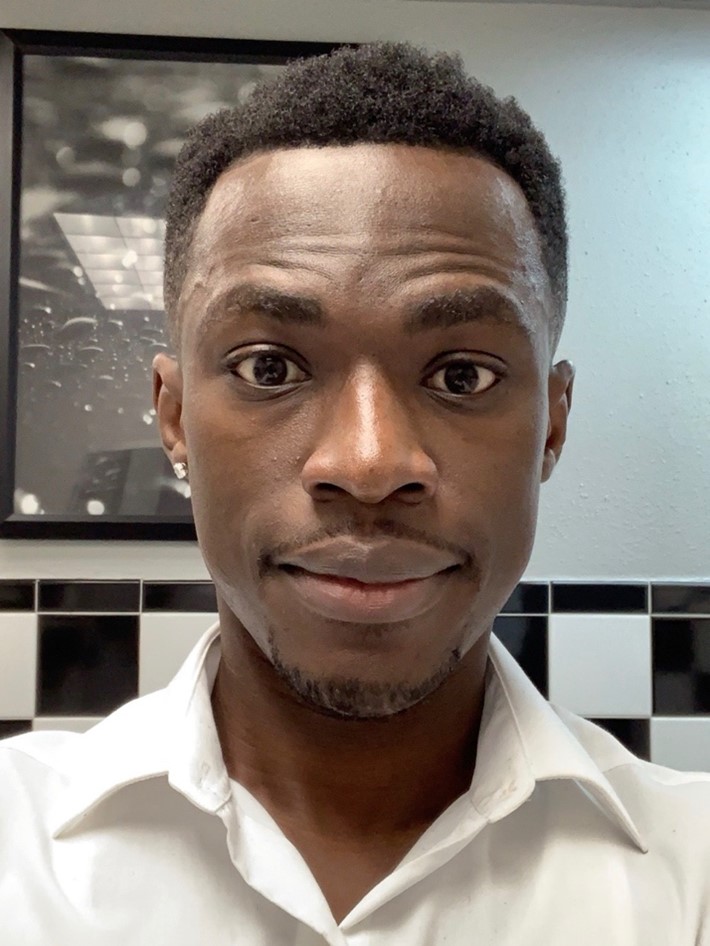Teddy Amoaning’s passion for environmental, health, and safety (EHS) was ignited after his little brother was exposed to lead-based paint as a child. As a result, his younger brother was, unfortunately, diagnosed with mental illness and experienced a myriad of health and developmental issues. Amoaning’s mother, who works as a CRN, dedicated her life to care for his brother – and Teddy himself decided to pursue a career in the EHS field so he would be able to understand the risks associated with lead-based paint and other environmental issues.
“I felt that the federal governmental section for Housing and Urban Development (HUD) wasn’t doing enough to ensure that homes in poor communities were free of lead, asbestos and other contaminants since my little brother’s exposure to lead-based paint,” Amoaning recently shared with EHS Daily Advisor.
Amoaning would go on to graduate from the University of Connecticut with a bachelor’s in environmental science and later obtained his B.S. in Public Health with an emphasis in Industrial Hygiene from Utah State University. His career path includes working as an environmental consultant for Fuss and O’Neill EnviroScience and then he served as an industrial hygienist for Freeport-McMoRan.
Today, Amoaning currently works as a Safety Engineer for a Texas-based pharmaceutical company that manufactures eyecare, skincare, and other medical products. In his role, Amoaning works with Active Pharmaceutical Ingredients (API) and manages a full environmental program. He not only works to ensure there is adequate medical surveillance for every employee that must use APIs but also ensures that there are adequate engineering controls, such as isolated glove box for weighing/dispensing and ventilation.
“Due to the nature of the business and the public water systems, I work closely with city local environmental inspectors to ensure all discharges are approved and discharged accordingly,” Amoaning says. “I work with the Texas Commission on environmental quality to ensure all environmental waste and discharges are conducted appropriately.”
In our latest Faces of EHS profile, meet Teddy Amoaning.
Who is/was your biggest influence in the industry?
When I started my career as an environmental consultant, my project manager was a certified industrial hygienist. He educated me on the importance of public health in all industries, as well as how occupational health and safety professionals make a huge difference in employee’s lives. Our work as health and safety professionals is often overlooked since there is a huge latency period between exposure and symptoms but the joy and grace you gain from helping employees is very rewarding.
What’s your best mistake and what did you learn from it?
Health and safety are expensive, and many companies preach safety but most of them do not want to invest the necessary money required to ensure adequate safety for all employees. Some of the best lessons I learned include ensuring engineering controls are recommended first and having a reasonable budget for these controls before promising employees that the problem will be solved.
What’s your favorite part about working in the industry? What’s your least favorite part, and how would you change it?
My personality fits in with health and safety. I am engaging, outgoing, talkative, and very friendly. As a health and safety professional, I enjoy having access to every function of the job and being able to help and educate employees on the need for safety professionals. My least favorite part about working in this industry is the lack of commitment to necessary funds by some professionals to improve safety.
It sounds like through your experience you really care about people, and you want to help them feel safe and comfortable, which is important in the industry.
We are all caring people, and the fact that I have a career where I can perform risk assessment, collect samples, evaluate the job and recommend solutions is beautiful. Being part of a process from start to finish and the fact that employees know that you care and are willing to help is very rewarding.
Where do you see the industry heading in five years? Or are you seeing any current trends?
My current industry in pharmaceutical is ensuring that all APIs are generated in a safe manner and creating Safety Data Sheets (SDS) that accurately provide all exposure limits and lists all ingredients in each API. Safety professionals depend heavily on the information provided in SDS’s, so it is important that these are accurate. By having this information as accurate as possible, it ensures that safety professionals are effectively providing recommendations that will provide safe working environments for all employees.
What are you most proud of?
When I was an occupational health and safety consultant, I was able to see and experience many different industries that helped me understand various state regulations and guidelines for each industry. When I follow up with clients and find out that my recommendation was implemented it’s very rewarding because I know I helped move the needle forward in health and safety.
Do you have any advice for people entering the profession?
Although occupational health and safety is rewarding industry to work in, it is challenging and requires subject matter and technical abilities. It requires you to conduct research and perform risk assessments and provides entrance to operations and maintenance as well as leadership roles. With those things in mind, if you are going to enter this profession be sure you are willing to work with people from all backgrounds. Be sure you are ready to learn and continue learning to understand the complex changing environment of research and controls.


